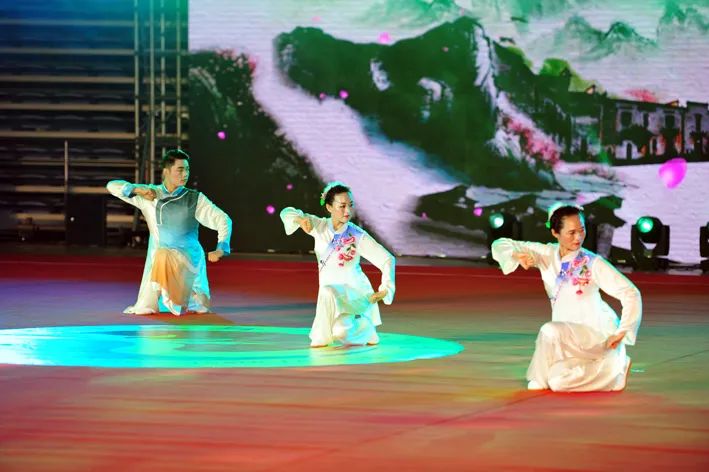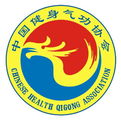
Fitness Qigong is a traditional sport with ethnic characteristics. Regular practice of Fitness Qigong is beneficial for improving physical fitness and enhancing physiological functions. Results from performance tests indicate that Fitness Qigong significantly improves physiological functions in several aspects:
1. Improved Reaction Speed
Reaction speed refers to the time taken from the appearance of a stimulus to the initiation of a response. It is an important physiological indicator for testing the dynamic response speed of the nervous system and is also a key measure of human aging. Hand reaction speed is often used to assess overall reaction speed. The process of hand reaction involves: eye — nerve impulse transmission — central response — nerve impulse transmission out — hand muscle response. A study randomly divided elderly individuals aged 50-70 into experimental and control groups. After three months, the experimental group practicing Fitness Qigong showed improved hand reaction speed. After six months of practice, the female experimental group exhibited significant improvements in hand reaction speed, while the male experimental group also showed enhancements. In contrast, the control group that did not practice Fitness Qigong showed almost no change in hand reaction speed. This indicates that Fitness Qigong training has a positive effect on improving the reaction capabilities of the elderly.
2. Increased Muscle Strength
Grip strength primarily tests the muscle strength of the forearm and fingers, back strength assesses the muscles of the back, and lower limb strength evaluates the muscles of the legs. With aging, muscle strength in the elderly tends to decline significantly. After six months of Fitness Qigong training, the experimental group showed significant increases in grip strength, back strength, and lower limb strength, while the control group exhibited a downward trend.
Practicing Fitness Qigong enhances strength, aligning with the movement principles of “relaxation and tension combined, dynamic and static integrated.” Relaxation refers to the need for muscles, joints, the central nervous system, and internal organs to be relaxed during practice. Under conscious control, practitioners gradually achieve gentle breathing, a calm mind, and a relaxed body while maintaining correct posture. Tension refers to applying appropriate force during practice, which should be momentary, while relaxation must be continuous throughout the movements. For example, the “Pushing Palm” in Fitness Qigong · Yi Jin Jing, the “Deer Resistance” in Wu Qin Xi, the “Two Hands Supporting Heaven” in Ba Duan Jin, and the “Xu Character” in Liu Zi Jue all require this balance of relaxation and tension, which helps to balance Yin and Yang, smooth the meridians, lubricate the joints, and strengthen muscles and bones. The structure of Fitness Qigong movements, including various stances and the depth of bending and stretching, significantly exercises the lower limb muscles. Movements such as the “Three Plates Landing” in Yi Jin Jing, the “Tiger Pounce” in Wu Qin Xi, the “Fist Clenching with Angry Eyes” in Ba Duan Jin, and the “Breath Control” in Liu Zi Jue all contribute to this effect. Additionally, many Fitness Qigong movements require spinal flexion and extension, arm twisting, and finger gripping, which fully exercises the back and upper limb muscle groups.
3. Enhanced Flexibility
Fitness Qigong movements emphasize stretching and pulling, requiring the torso to perform forward bends, backward arches, lateral flexions, abductions, adduction, and twisting motions to stretch various muscle groups and fascia, as well as tendons, ligaments, and joint capsules at major joints. This promotes blood circulation and nutrient metabolism in the soft tissues of the active areas, enhancing the flexibility and agility of muscles, tendons, and ligaments, ultimately achieving the goal of strengthening the body. For instance, the forward bend in the “Dabong” of Fitness Qigong · Yi Jin Jing, the waist pull in the “Tiger Pounce” of Wu Qin Xi, the foot grasping in the “Two Hands Grasping Feet to Strengthen the Kidney and Waist” of Ba Duan Jin, and the chest expansion in the “Xi Character” of Liu Zi Jue can all significantly improve the trunk’s extension over long-term practice. Experimental data show that the “sitting forward bend” measurement in elderly individuals practicing Fitness Qigong significantly improved, indicating that Fitness Qigong effectively enhances human flexibility.
4. Improved Balance Ability
Fitness Qigong includes many movements that enhance balance. For example, in Wu Qin Xi, the “Bird Play” mimics the stance of a crane standing on one leg, performed dynamically; the “Deer Play” involves waist twisting and looking down, which exercises the vestibular receptors; the “Monkey Lift” requires looking left and right while raising the heels; and movements like “Tiger Pounce,” “Deer Run,” and “Bear Shake” involve brief pauses that require maintaining stability. Additionally, variations in stances such as horse stance, bow stance, and empty stance effectively enhance lower limb strength and joint flexibility, improving overall balance. Experimental results indicate that after six months of Fitness Qigong training, participants’ balance ability significantly improved, with extended duration of standing on one leg with eyes closed, while the control group’s performance slightly declined. Thus, the effectiveness of Fitness Qigong in improving balance is evident.
5. Improved Microcirculation
Finger temperature reflects the state of microcirculation in the body. A higher finger temperature indicates good microcirculation, while a lower temperature suggests poor microcirculation. Exercise increases finger temperature by enhancing blood flow to the peripheral circulation, thereby increasing local metabolic rates. Experimental results show that after practicing Fitness Qigong, participants’ finger temperatures significantly increased, indicating that Fitness Qigong promotes microcirculation and improves local metabolism. Furthermore, after six months of training, cardiovascular function indicators such as systolic pressure, diastolic pressure, and heart rate index in the experimental group showed significant improvement, suggesting that practicing Fitness Qigong helps stabilize and improve blood pressure.
6. Increased Lung Capacity
Lung capacity reflects the function of the lungs, which is closely related to cardiovascular function. Exercise expands the lungs, increasing ventilation, while also increasing blood volume, which raises the heart’s demand for blood supply. Enhanced blood circulation increases oxygen supply to the lungs, thereby improving the oxygen content in the blood and effectively promoting overall tissue metabolism. During Fitness Qigong practice, participants are required to coordinate breathing with movements, aiming for deep, long, and even breaths, especially focusing on the depth of exhalation. The slow movements of Fitness Qigong do not require high oxygen consumption or lung ventilation, making this deep and slow breathing method beneficial for improving lung ventilation efficiency. After six months of practice, the experimental group showed a decrease in resting respiratory rate, a reduction in oxygen content in exhaled air, and no change in oxygen consumption per minute at rest, indicating a significant change in breathing patterns, with increased depth of exhalation and improved lung ventilation efficiency.
Deep and slow breathing not only strengthens the inspiratory muscles but also enhances the strength of the expiratory muscles and accessory muscles to some extent. Experimental results indicate that after six months of Fitness Qigong practice, participants’ lung capacity significantly increased. For example, in Fitness Qigong · Ba Duan Jin, the movements “Two Hands Supporting Heaven,” “Left and Right Bowing Like Shooting Eagles,” and “Two Hands Grasping Feet to Strengthen the Kidney and Waist” require increasing the amplitude and depth of breathing, thereby fully exercising the respiratory muscles and enhancing lung capacity.
From the testing results, the experimental group showed a significant decrease in the abnormal rate of electrocardiograms after six months of Fitness Qigong practice, with statistically significant differences compared to pre-exercise levels. This indicates that practicing Fitness Qigong positively impacts improving cardiac blood supply, enhancing cardiac function, and reducing the incidence of chronic cardiovascular diseases. This is related to the slow, continuous, relaxed, and expansive nature of Fitness Qigong movements, which, through sustained dynamic muscle activity, increases venous return and enhances the preload on the heart, while also increasing the afterload on the heart muscle, leading to some thickening of the heart muscle wall. This differs from aerobic exercises like running and swimming, which primarily increase the volume of the heart’s chambers.
7. Increased Bone Density
As people age, the endocrine system gradually declines, and the continuous loss of calcium salts from bones can lead to osteoporosis. While many factors contribute to osteoporosis, insufficient physical activity is one of the significant causes. Reports suggest that regular participation in physical fitness activities can effectively prevent the occurrence of osteoporosis in the elderly. For instance, in Fitness Qigong · Wu Qin Xi, the experimental group showed a significant increase in bone density after six months of training, with statistically significant differences compared to pre-exercise levels. This is related to the weight-bearing transitions, single-leg loading, and heel raises in the Wu Qin Xi practice. The increase in bone density reflects the significant role of Fitness Qigong in improving bone metabolism disorders and preventing osteoporosis in the elderly.
8. Improved Body Shape
In adult physical fitness surveys, body shape indicators include height, weight, body fat percentage, waist circumference, and hip circumference. Height reflects the development of the skeletal system and vertical growth level, while weight describes the overall development of bones, muscles, subcutaneous fat, and internal organs. However, recent studies suggest that solely relying on height and weight to assess physical condition does not accurately reflect an individual’s overall level. The BMI index, calculated as weight/height² (kg/m²), serves as a better indicator of individual development. A BMI between 20-24 is considered healthy, below 20 indicates underweight, 24-26.4 indicates mild obesity, and above 26.4 indicates obesity. Both underweight and obesity can negatively impact health. The Waist to Hip Ratio (WHR) reflects fat distribution, with excessive abdominal fat closely linked to disease occurrence and progression. Generally, a WHR ≥ 0.8 in women is considered concerning. Experimental results show that after practicing Fitness Qigong, the experimental group exhibited significant changes in weight, BMI, circumferential measurements, and skinfold thickness, primarily due to changes in body composition, with a notable decrease in subcutaneous fat. The female experimental group showed a trend of weight loss, with significant reductions in waist circumference and WHR, while body fat percentage remained relatively stable. This indicates that Fitness Qigong training promotes fat redistribution, reduces visceral fat, and is beneficial for lowering the incidence of diseases closely related to WHR.
Heart rate is a simple and effective indicator of cardiovascular function, commonly used to reflect exercise intensity. It is generally accepted that the target heart rate for elderly individuals participating in aerobic fitness activities should be 60%-80% of their maximum heart rate. Exceeding this intensity poses certain risks, while exercising below this intensity yields poor training effects. The duration to reach the target heart rate should be determined based on the individual’s exercise history, typically lasting 20-30 minutes, inversely proportional to exercise intensity. Based on this, the effective fitness heart rate range for individuals aged 50-69 is calculated to be 96-128 beats per minute. Testing of 100 individuals aged 50-69 practicing Fitness Qigong revealed that during the complete set of exercises, the average maximum heart rate reached 120 beats per minute, with an average heart rate of 100 beats per minute throughout the practice, meeting the target heart rate requirements, demonstrating that Fitness Qigong is a moderate-intensity aerobic exercise. The experimental group consistently practiced Fitness Qigong four times a week, repeating the full set of movements 2-3 times, over a six-month period. Although the exercise intensity was not high, prolonged practice led to the consumption of body and subcutaneous fat. Therefore, long-term, systematic participation in Fitness Qigong can improve body composition in the elderly and help shape a healthy physique.
From the above analysis, it is evident that Fitness Qigong offers moderate exercise, is easy to learn and practice, and can effectively improve physical fitness and enhance physiological functions with long-term adherence. Thus, Fitness Qigong is a highly popular sport among the elderly.

Scan the QR code to follow us





The official Douyin account of the China Fitness Qigong Association (please open Douyin to scan)


